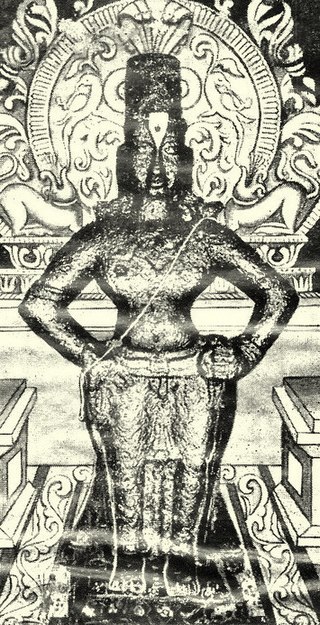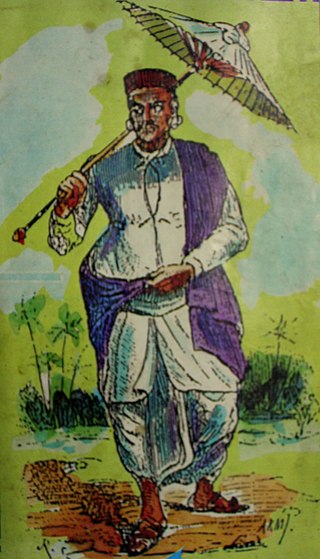Chari/Achari/Achar/Acharya is a Hindu surname found in Vishwakarma Brahmin caste that encompasses various communities across India, with regional modifications as consistent with the local languages.
People who may bear this surname are include:
Chari surname is common in the Iyengar Brahmin community that is found predominantly in the southern region of India.
Chari ('च्यारी/चारी') is a community of artist in Goa and Konkan. They are the traditional Hindu carpenter in Goa. In this community every person has the surname as Chari.
Chari belong to Panchal caste which is also known as Viswakarma. They were also called as 'Shivabrahman'. 'Saiyadri Khanda' of 'Scanda Puran'- puran that gave Puranic importance of Goa says artist of ancient Goa were called as 'Shaivagayatri Brahmins'. Those Chari who fled Goa during Portuguese time to prevent them being getting converted to Christianity & settled in Solapur district are still known as 'Shiva Brahma Sutar' Since Chari are traditional carpenters of Goa their main occupation is carpentry. They do smithery also. In fact, they are master in most of the technical work; so they are also referred as a borne engineers.
Traditionally caste wise Panchal Brahmin of Goa Categorized in 3 different castes. They are Vishwakarma Brahmin Chari, Daivadnya Brahmin (Sonar) and Twasta Brahmin (Kasar) Community. But currently daivadnya doesn't consider themselves under Vishwakarma.
Different names of Chari popular in Goa. Chari were known with the different names since ancient Times. Following are some of the name. Acharya- Meaning teacher of religion. Today it changed Acharya-Achari-Chari.
Mest/Mestri - At many places where Chari stays is known as Mestawado. There is Mestawado in Panchwadi, Mandre, Vasco, Betoda, Kurti, Usgaon etc. In Goa there are places in known as Mestbhat in Mershi & Madgaon.
Kumbhar - The word Kumbar is derived from the Sanskrit word Stambh meaning pillar. A good pillar carver is called Kumbar. At some places in Goa there are paddy field Qumarachi Namshi allotted to old Chari resident.
Shiva Brahmin - Chari was called Shaiva Brahmin in Goa during ancient times. Skanda Purana antargat Sahyadri Khanda refers artist of Goa as Shivagaytri Brahmin.
Vinani - Vinani in old Konkani meaning blacksmith and was adhered to Chari. There are lands allotted by the Gaunkari to Chari in many of the villages of Goa with the name Vinani.
Zo Ferrieiro - All the Portuguese documents refers Chari with surname as Zo Ferreiro. The word Ferreiro has been derived from Latin ferrarius meaning blacksmith. Zo can be from the word Oja. Zo word got corrupted from Oja-OJo-Zo.
The Chari surname is found among various communities in India.
Chari are predominantly Devi worshipers. The village where they settled they accepted village deity as their family deity. Chari are followers of Shiva. Being a shaiva or follower of Shiva they are called 'adave' in local language. In olden times they were referred as Shaiva Brahmins. Even the Sahyadri Khanda of Scanda Purana has the reference of it. They worship Vishwakarma since they have descended from him. Chari are Shaiva still their main community deity is 'Shree Ragunath (Ram)' of Gimoney. This temple has history of more than 500 years. It was destroyed by Moghal aggression in 1684 by Shaijada Shaha Alam. Chari reconstructed it. They have Shree Ram's temples at Mayade & Vasco. Also the main goddess to whom every Vishwakarma people worships is Kalika or Kalamba. Her temple is situated at & Merce Goa & Ancola in Karnataka where she is known as Kallama. The main temple is situated at Shirsangi at Belgaum district of Karnataka.
In South India, the surname is also common within the Vaishnavite community, who worship Lord Vishnu.

The Konkan is a stretch of land by the western coast of India, bound by the river Daman Ganga at Damaon in the north, to Anjediva Island next to Karwar town in the south; with the Arabian Sea to the west and the Deccan plateau to the east. The hinterland east of the coast has numerous river valleys, riverine islands and the hilly slopes known as the Western Ghats; that lead up into the tablelands of the Deccan. The region has been recognised by name, since at least the time of Strabo in the third century CE. It had a thriving mercantile port with Arab tradesmen from the 10th century. The best-known islands of Konkan are Ilhas de Goa, the site of the Goa state's capital at Panjim; also, the Seven Islands of Bombay, on which lies Mumbai, the capital of Maharashtra and the headquarters of Konkan Division.

Vithoba, also known as Vitthala, and Panduranga, is a Hindu deity predominantly worshipped in the Indian states of Maharashtra and Karnataka. He is a form of the Hindu deity Vishnu in his avatar: Krishna. Vithoba is often depicted as a dark young boy, standing arms akimbo on a brick, sometimes accompanied by his consort Rakhumai.
Gaud Saraswat Brahmins (GSB), also known as Shenvis are a Hindu community of contested caste status and identity. They primarily speak Konkani and its various dialects as their mother tongue.
The caste system in Goa consists of various Jātis or sub-castes found among Hindus belonging to the four varnas, as well as those outside of them. A variation of the traditional Hindu caste system was also retained by the Goan Catholic community.
Panchal is a Master Craftsman caste of India. Panchal is a collective term for class of engineers, architects, priests, sculptors and temple builders. They belong to the Vishwakarma sect
Ojha is a Hindu surname. The term Ojha' or Oza is a Hindu Brahmin caste that has settled in north and central India and are found in the states of Rajasthan, Uttar Pradesh and some parts of Bihar and Madhya Pradesh. Ojha is a surname for Hindu Sikhwal Brahmins, Shrimali Brahmins, Atri Gotra Brahmin, Saraswat Brahmin, Bhumihar Brahmins, Kanya Kubj Brahmin, Saryuparin Brahmin, Nepali, Vishwakarma Brahmin, and Bengali Brahmin of India and Nepal. Ojhas are considered to be worshipers of Durga, Saraswati, Hanuman, Mahalakshmi and Shiva. The surname is used amongst speakers of Nepali, Bhojpuri, Rajasthani, Gujarati, Hindi, Oriya, Kumaoni and Bengali as well as the Santhals. In India all ojha originate from Rajasthan.Ojha were also spiritual leader for uttar Pradesh and Bihar region. They perform as “Rajguru”, “Army Trainer”, “Thinker” and Philosopher. Most of the Ojhas are concentrated in the Rajasthan Gujarat (India) and Nepal.

Suthar is a community within the Vishwakarma community found primarily in India and Pakistan. Its traditional occupation is mostly carpentry. Suthar community predominantly found in Gujarat and Rajasthan is a mixture of various castes.

The Ramnathi Temple is located in Ramnathim, Bandivade in Goa. The primary worshippers come from the social classes Goud Saraswat Brahmins (GSB) belonging to Gokarn Math, & Kashi Mutt, Daivadnya Brahmin and Vaishyas. Similar to other Goan Brahmin temples, Ramnathi too incorporates the system of Panchayatan, therefore, this temple houses 5 main deities namely; Shri Ramnath, Shanteri, Kamakshi, Laxmi Narayan, Ganapati, Betal and Kalbhairav, along with other family purushas.

Hinduism is the majority religion of people living in Goa. According to the 2011 census, in a population of 1,458,545 people, 66.08% were Hindu.
Achar, Achari, or Achary is a surname from southern parts of India.. Achar/Achari as last name is used for girls and Achar/Achari/Achary/Acharya for boys in Karnataka. The surname is a last name used by members of the Vishwakarma community native to the states of Tamil Nadu, Andhra Pradesh aKarnataka and Kerala in India.

The Daivadnya,, is a community from Goa and Karnataka, who claim to have descended from Vishwakarma. Although they claim themselves to be Brahmin, but these claims are not accepted by others including local Brahmin castes. They are native to the Konkan and are mainly found in the states of Goa and Damaon, Canara, coastal Maharashtra, and Kerala. Daivadnyas in the state of Karnataka are classified by National Commission for Backward Classes as an Other Backward Class.
Karekar is one of the common surnames of the Daivadnya Brahmin community, predominantly residing in Goa, some parts of Karnataka and Maharashtra. They originally hail from Caraim, a village on Chorão island in coastal Indian state of Goa. They belong to various brahminical Gotras and use different surnames and titles and worship Gajantalakshmi Ravalanatha in the village of Mashel, in Goa as their Tutelary deity. Historically many of them were wealthy merchants who formed themselves into guilds or Shreni, and also functioned as Mahajans and Ganvkars of the Ganvkari system.
Padhye Brahmin community hails from Goa, they speak a unique dialect of Konkani known as "Bhati Bhasha".
Mahamaya Kalika Saunsthan is a temple complex in Kansarpal village of Bicholim taluka in the state of Goa, India. The presiding deity of the temple is Kali worshipped in the form of Mahamaya. The goddess Kali, the terrible and cruel to the demons and evil doers, is worshiped with blood sacrifice in most parts of India, in Goa however the fierce invocation of the deity was never popular. As per the tradition, after slaying the demons Madhu and Kaitabha, the deity's anger was soothed and the deity manifested herself in a peaceful (Shanta), gentle (Soumya) form, which is very popular in Goa.This form of Kali is also known as Bhadrakali or Kali who is gracious.
Sahyādri-khaṇḍa is a Sanskrit-language text, notable for containing the founding myths of several Brahmin communities of south-western India. The text claims to be a part of the Skanda Purana. It is actually a collection of disparate texts that date from 5th to 13th centuries, and have been organized as part of a single text relatively recently.
Hinduism in Tamil Nadu finds its earliest literary mention in the Sangam literature dated to the 5th century BCE. The total number of Tamil Hindus as per 2011 Indian census is 63,188,168 which forms 87.58% of the total population of Tamil Nadu. Hinduism is the largest religion in Tamil Nadu.

Shri Betal temple (बेताळ) is a Hindu temple in Amona village in the Bicholim taluk of Goa, India. The presiding deity is Betal who is worshiped as a Bhairava form of Shiva in the form of a warrior; normally the idol of Shree Betal is standing in the temple, but during festivals his idol is displayed on a horse back in the village. He is the Gram devata of Amona.

Bero railway station serves Bero and surrounding villages in Purulia district in the Indian state of West Bengal.
The Vishwakarma community are a social group of India, sometimes described as a caste. They claim themselves to be Brahmin or of high-status in the caste hierarchy, although these claims are not generally accepted outside the community. The community comprises five subgroups—carpenters, blacksmiths, bronze smiths, goldsmiths and stonemasons— claim to be descendants of Vishvakarma, the builder and architect of heavenly realm, a Hindu deity.
Charodi Mesta community from Karnataka state in India. They known as Konkan Achar/Acharya or Charodi in North Canara & Malenadu Karnataka, Also known as Chari in Goa, and Nayak/Mesta/Mestha in North/South Canara, Karnataka. Their traditional work is carpentry..